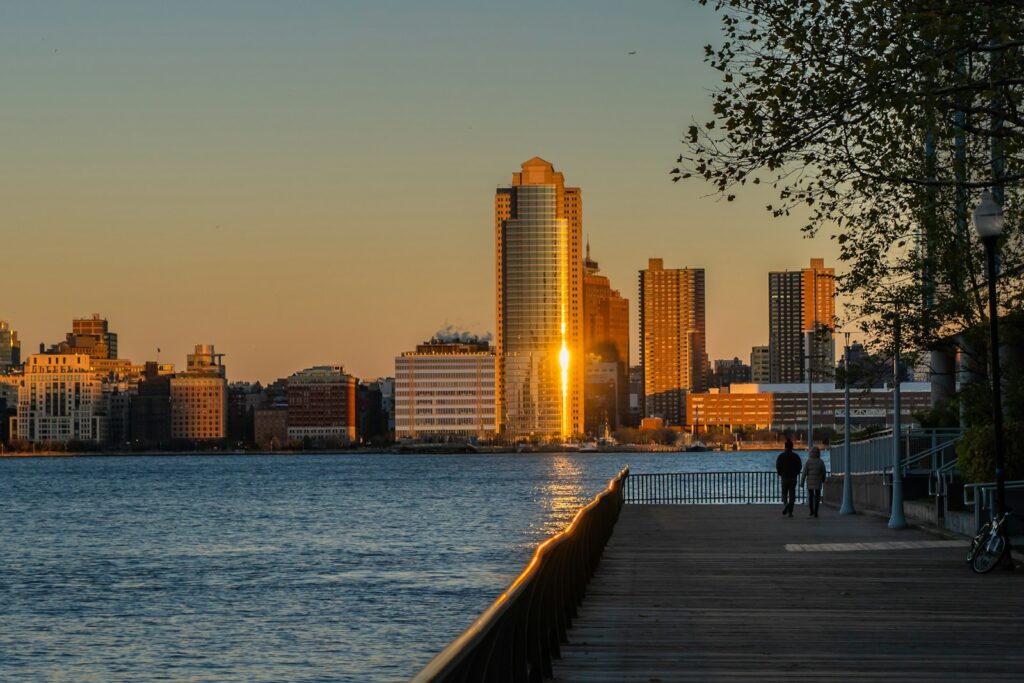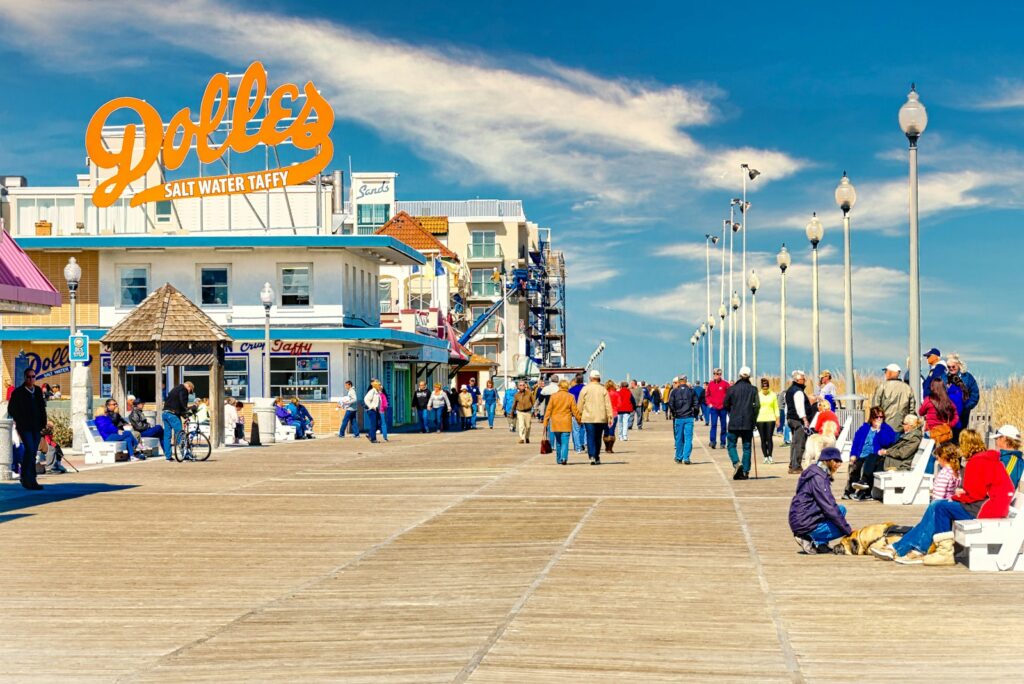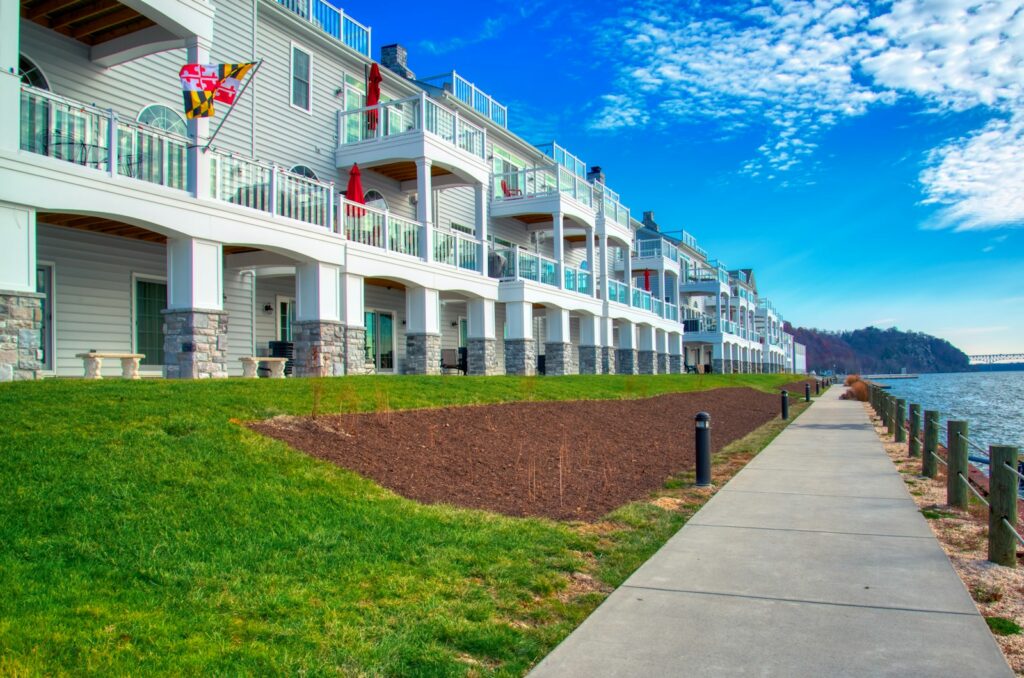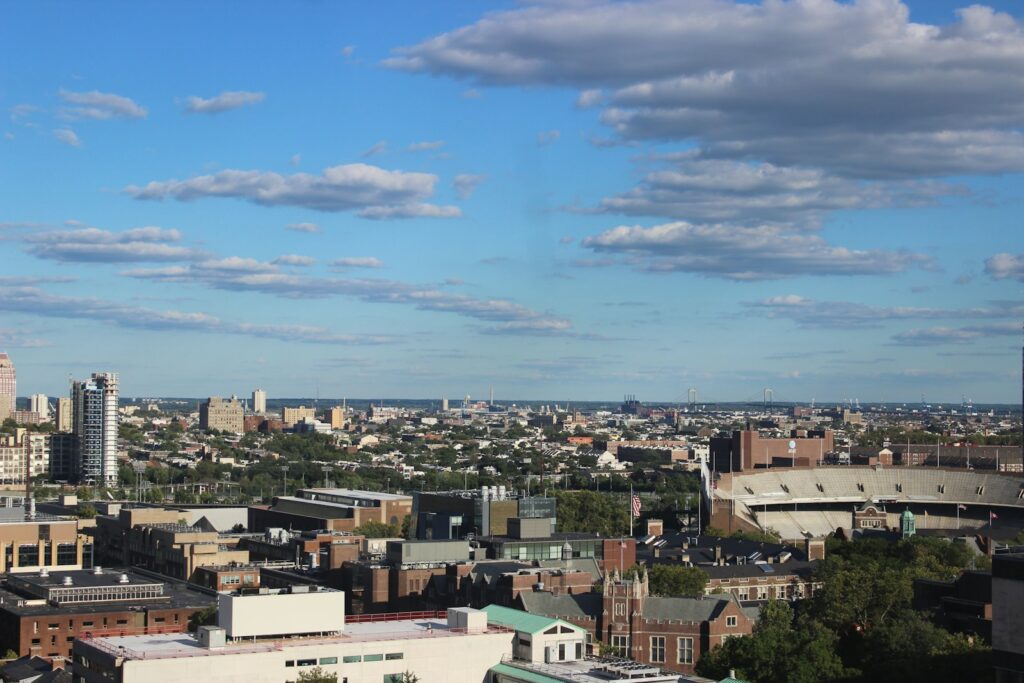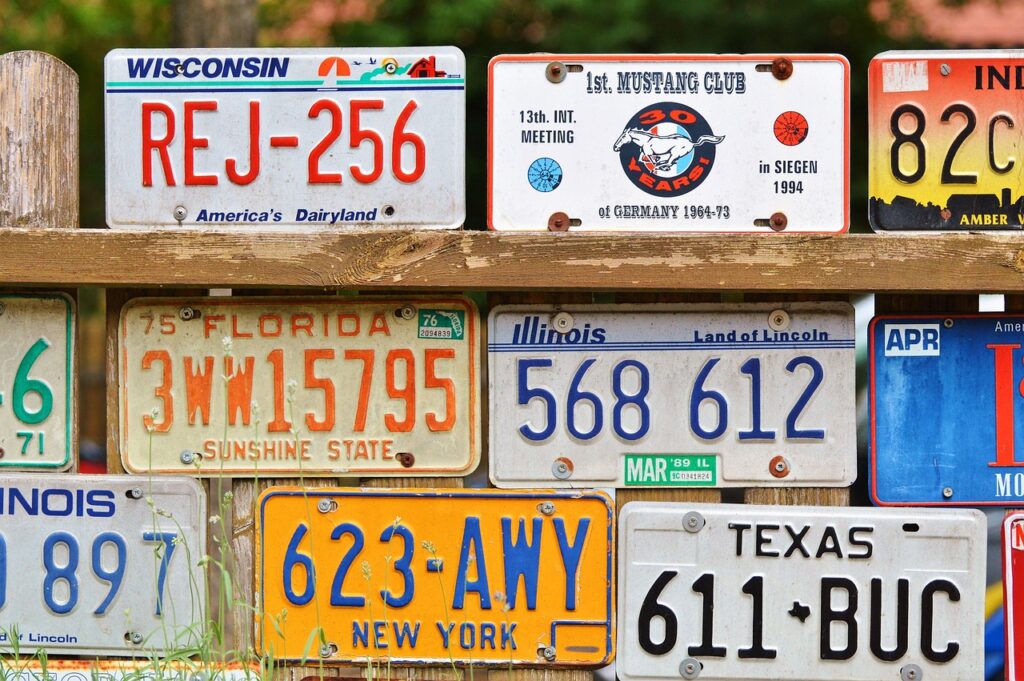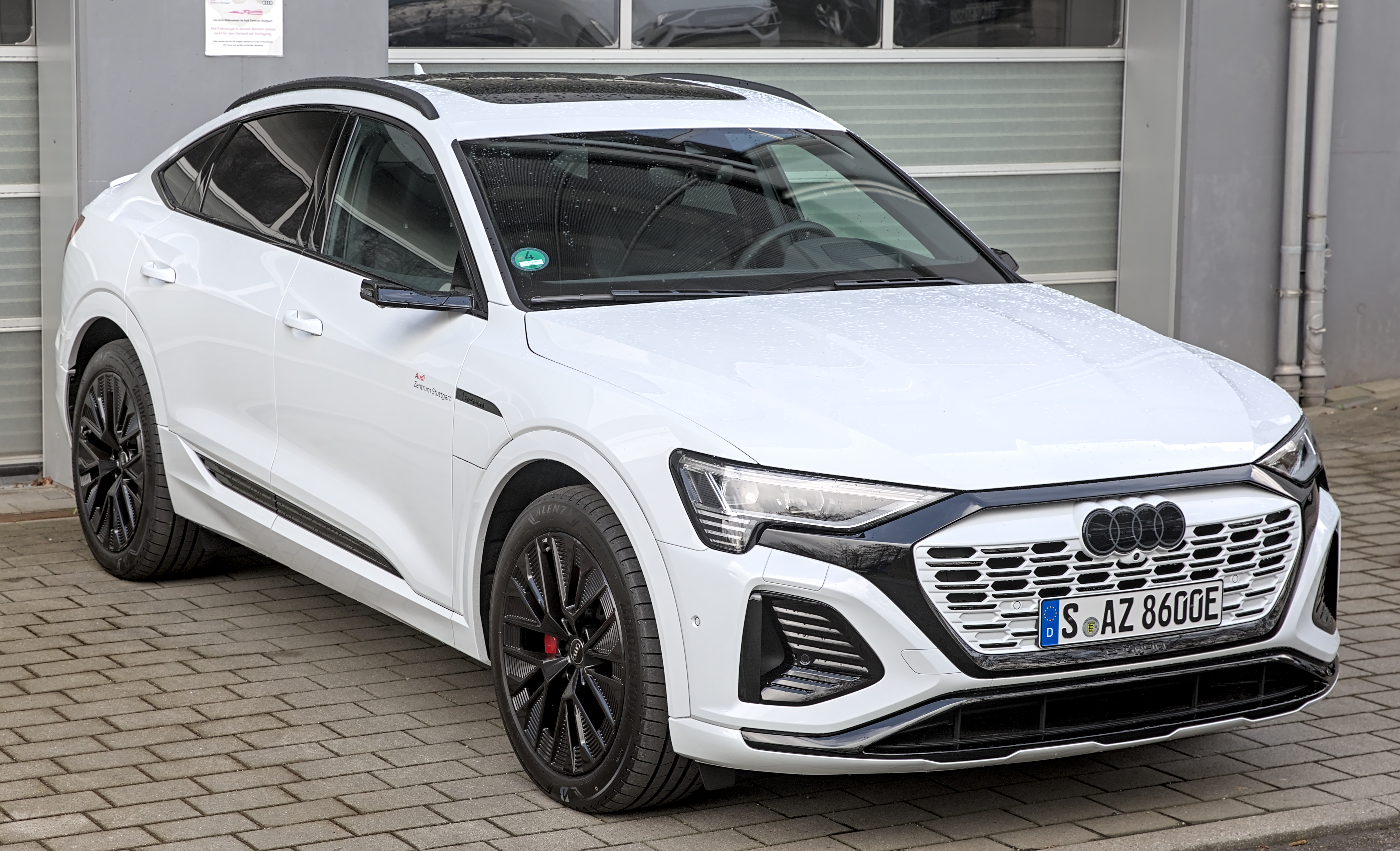
For automotive enthusiasts, the roar of a V8 engine has always been more than just a sound; it’s a symphony of power, heritage, and uncompromising performance. In an era where emissions regulations increasingly dictate the future of internal combustion, Dodge made a bold statement with its 2026 Durango lineup, going all-in on V8 power—a move squarely aimed at those who appreciate the visceral thrill of a large-displacement engine. This decision, heralded by many as a defiant stand against the ‘dying of the light’ for big V8s, promised a return to muscle-car glory in SUV form, yet it’s already encountering significant roadblocks across a substantial portion of the United States.
This re-embrace of V8s by Stellantis, following a period under former CEO Carlos Tavares where the company began phasing them out in favor of smaller six-cylinder and electrified powertrains, signifies a noteworthy shift in strategy. With federal fuel penalties effectively nullified by previous administrations and leadership changes at the top, the stage seemed set for a V8 resurgence. However, the powerful influence of the California Air Resources Board (CARB) continues to hold sway over nearly 40 percent of the U.S. market, creating a complex regulatory environment that directly impacts where these high-output Durango models can be sold.
Indeed, the news quickly surfaced from Mopar Insiders, later confirmed by Dodge, that while the Durango GT with its 5.7-liter Hemi will be available nationwide, the higher-output 6.4-liter R/T and 6.2-liter supercharged Hellcat trims are effectively banned in CARB states. Seventeen states plus Washington, DC, follow CARB standards, presenting a significant challenge for Dodge’s ambitious V8-only strategy for the aging Durango. This article will meticulously detail the implications for these states, dissecting the reasons behind these bans and what it means for the eagerly awaiting gearheads.
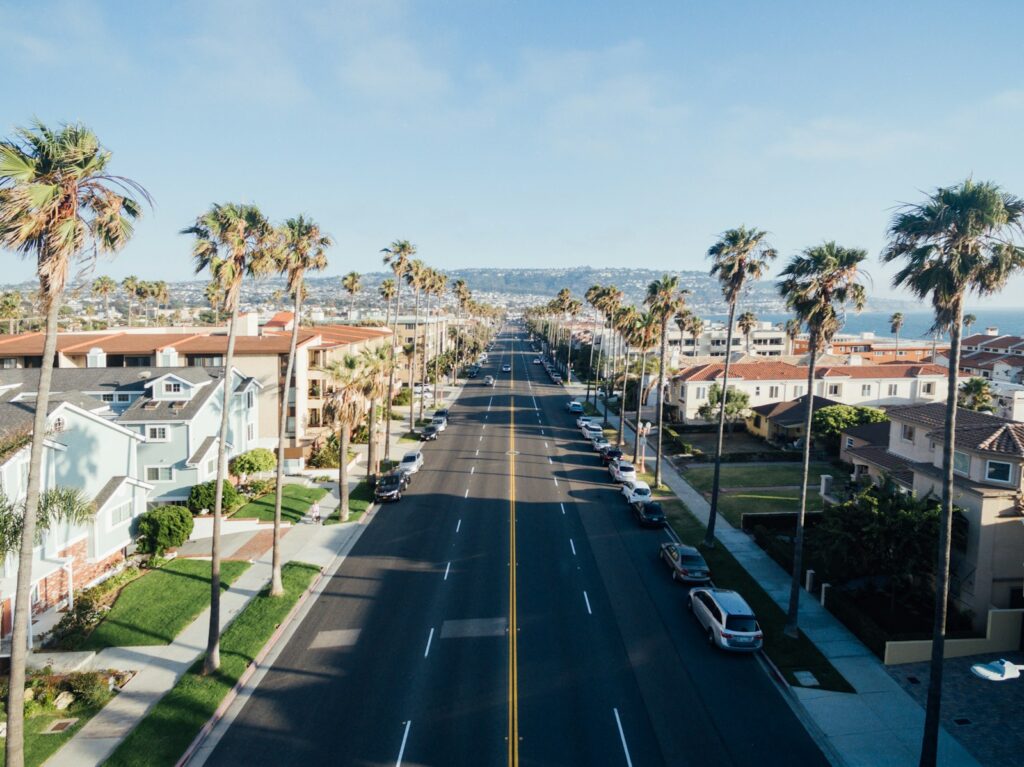
1. **California: The Origin of the CARB Mandate** Unsurprisingly, California stands at the epicenter of these sales restrictions. As the birthplace and primary enforcer of the California Air Resources Board (CARB) standards, the Golden State’s commitment to stricter emissions requirements has long set a precedent for environmental regulation nationwide. For Dodge enthusiasts in California, this means that the much-anticipated 2026 Durango R/T 392 and the SRT Hellcat, both boasting formidable V8 engines, will remain elusive, unable to be purchased or registered within state lines.
The inability to sell these powerful models in California highlights the significant market influence CARB wields. Despite federal rollbacks on fuel-economy penalties, CARB’s authority remains strong, shaping not only local but also national automotive trends. This creates a challenging paradox for automakers like Dodge, who are caught between federal regulatory leniency and the stringent demands of states adhering to CARB guidelines.
From a technical perspective, the 6.4-liter V8 of the R/T 392 and the supercharged 6.2-liter Hellcat engine simply do not meet CARB’s emissions requirements. To offer these engines in such a critical market, Stellantis/FCA would be compelled to undertake additional certifications and potentially costly mechanical modifications, an investment that, at least for now, does not seem to make financial sense for the company.
Car Model Information: 2020 Dodge Durango SXT RWD
Name: Dodge Durango
Manufacturer: Dodge
Production: 1997–present
Class: Mid-size,SUV
Predecessor: Dodge Ramcharger,Dodge Town Panel and Town Wagon
Related: Dodge Dakota
Layout: Front-engine, rear-wheel-drive layout,automobile layout
Caption: Dodge Durango GT 2021
ModelYears: 1998–2009,2011–present
Categories: 2000s cars, 2010s cars, 2020s cars, All-wheel-drive vehicles, All accuracy disputes
Summary: The Dodge Durango is a mid-size SUV produced by Dodge starting with the 1998 model year. The first two generations were very similar in that both were based on the Dodge Dakota and Dodge Ram, both featured a body-on-frame construction and both were produced at the Newark Assembly Plant in Newark, Delaware through the 2009 model year.
The third-generation Durango began with the 2011 model year. It is built on the same platform as the Jeep Grand Cherokee, features unibody construction, and has been assembled at the Jefferson North Assembly Plant in Detroit, Michigan, since late 2010.
Each generation had options for different engine sizes and power ratings, with different transmissions also. In 2009 a hybrid variant was introduced, but ended quickly with the second generation Durango. From 2007 to 2009 the Durango was available as the Chrysler Aspen from Chrysler. Over two million Durangos have been sold since it was introduced in 1998.
Get more information about: Dodge Durango
Buying a high-performing used car >>>
Brand: DODGE Model: Durango
Price: $20,993 Mileage: 60,817 mi.
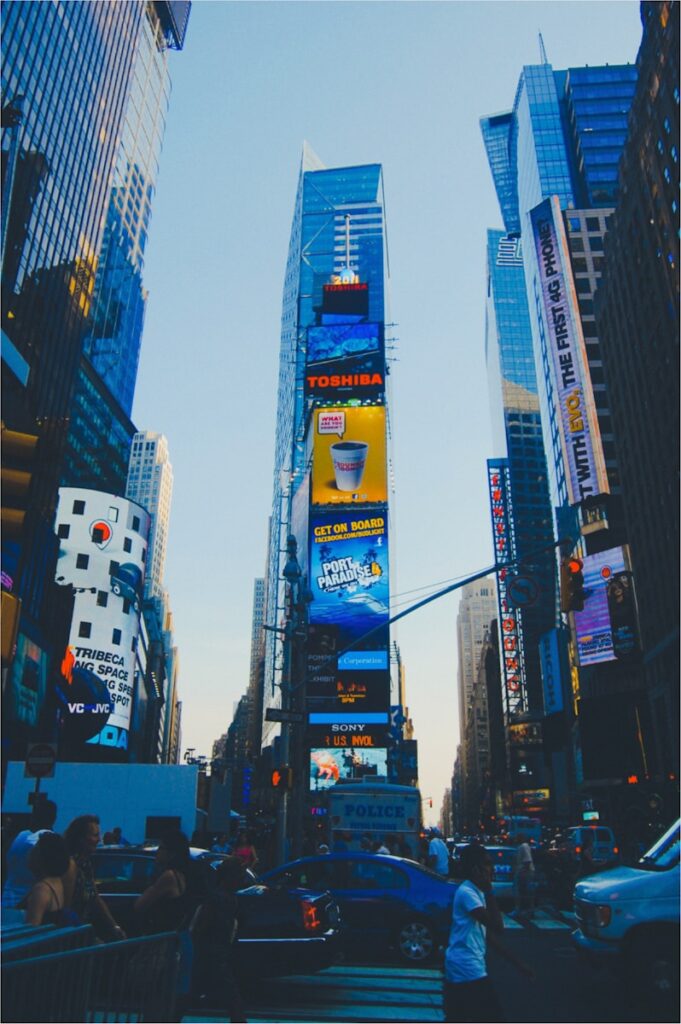
2. **New York: A Key East Coast Market Adhering to Stricter Rules** Following California’s lead, New York is another major market where the high-performance Durango models will not be available. As one of the seventeen states that adopt CARB standards, New York’s stance on emissions mirrors the stricter environmental regulations found on the West Coast, extending the impact of the V8 ban across the continent. This means that Dodge fans in the Empire State, known for their love of powerful vehicles, will also be unable to drive home in an R/T 392 or SRT Hellcat.
This restriction in New York further illustrates the widespread reach of CARB’s influence. It’s not merely a Californian issue but a bicoastal reality that fundamentally alters the sales landscape for performance vehicles. The collective weight of these major markets presents a formidable barrier for automakers looking to offer certain powertrains across their entire national dealer network.
For Dodge, the absence of these models in a state like New York represents a significant loss in potential sales volume and market presence. Enthusiasts who were saving up for the 2026 Dodge Durango 392 (R/T) or Hellcat will need to reassess their options, underscoring the direct personal impact of these regulatory decisions on prospective buyers.
Car Model Information: 2020 Dodge Durango SXT RWD
Name: Dodge Durango
Manufacturer: Dodge
Production: 1997–present
Class: Mid-size,SUV
Predecessor: Dodge Ramcharger,Dodge Town Panel and Town Wagon
Related: Dodge Dakota
Layout: Front-engine, rear-wheel-drive layout,automobile layout
Caption: Dodge Durango GT 2021
ModelYears: 1998–2009,2011–present
Categories: 2000s cars, 2010s cars, 2020s cars, All-wheel-drive vehicles, All accuracy disputes
Summary: The Dodge Durango is a mid-size SUV produced by Dodge starting with the 1998 model year. The first two generations were very similar in that both were based on the Dodge Dakota and Dodge Ram, both featured a body-on-frame construction and both were produced at the Newark Assembly Plant in Newark, Delaware through the 2009 model year.
The third-generation Durango began with the 2011 model year. It is built on the same platform as the Jeep Grand Cherokee, features unibody construction, and has been assembled at the Jefferson North Assembly Plant in Detroit, Michigan, since late 2010.
Each generation had options for different engine sizes and power ratings, with different transmissions also. In 2009 a hybrid variant was introduced, but ended quickly with the second generation Durango. From 2007 to 2009 the Durango was available as the Chrysler Aspen from Chrysler. Over two million Durangos have been sold since it was introduced in 1998.
Get more information about: Dodge Durango
Buying a high-performing used car >>>
Brand: Dodge Model: Durango
Price: $20,993 Mileage: 60,817 mi.
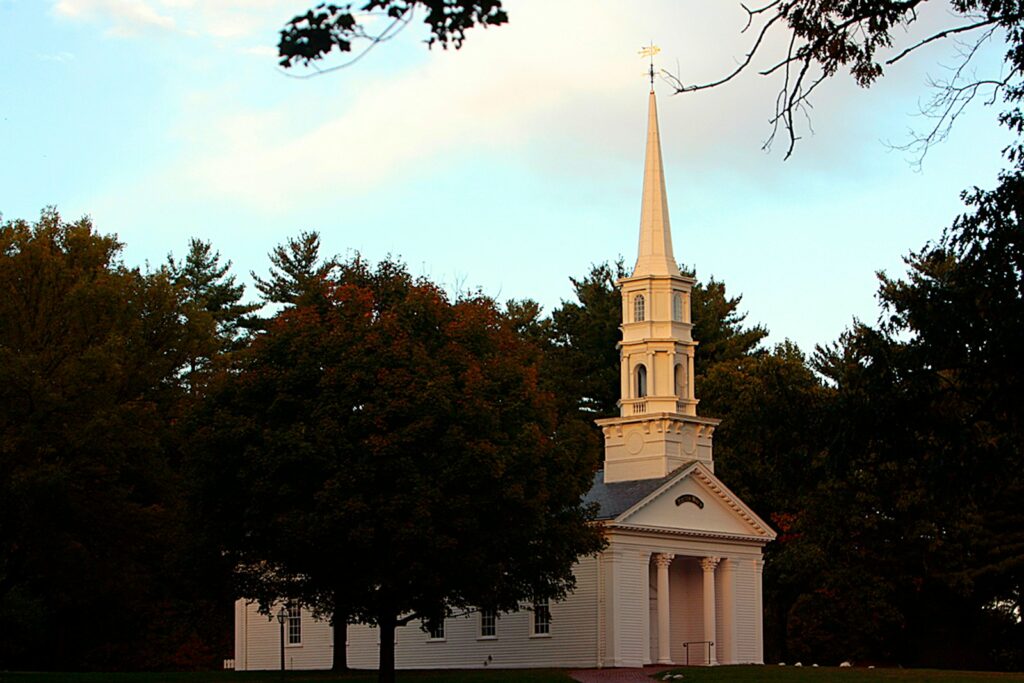
3. **Massachusetts: New England’s Commitment to Cleaner Air** Venturing further into New England, Massachusetts joins the roster of CARB-compliant states where Dodge’s higher-output Durango trims face a ban. This commitment to cleaner air and stricter emissions rules by the Commonwealth means that the potent 6.4-liter R/T and 6.2-liter supercharged Hellcat engines are off-limits for buyers there, despite the overall nationwide availability of the 5.7-liter Hemi GT model.
Massachusetts’ inclusion on this list reinforces the notion that CARB standards are not isolated to specific geographic regions but are adopted by states with a shared environmental vision. This creates a patchwork of regulations across the U.S., making national product distribution complex for manufacturers, especially for niche, high-performance offerings like the Hellcat.
The situation in Massachusetts, much like in other CARB states, highlights the ongoing tension between consumer demand for powerful engines and the imperative for environmental responsibility. Dodge’s challenge lies in navigating this landscape, working to satisfy performance enthusiasts while also addressing regulatory compliance, even if it means restricting sales in key areas.
Car Model Information: 2020 Dodge Durango SXT RWD
Name: Dodge Durango
Manufacturer: Dodge
Production: 1997–present
Class: Mid-size,SUV
Predecessor: Dodge Ramcharger,Dodge Town Panel and Town Wagon
Related: Dodge Dakota
Layout: Front-engine, rear-wheel-drive layout,automobile layout
Caption: Dodge Durango GT 2021
ModelYears: 1998–2009,2011–present
Categories: 2000s cars, 2010s cars, 2020s cars, All-wheel-drive vehicles, All accuracy disputes
Summary: The Dodge Durango is a mid-size SUV produced by Dodge starting with the 1998 model year. The first two generations were very similar in that both were based on the Dodge Dakota and Dodge Ram, both featured a body-on-frame construction and both were produced at the Newark Assembly Plant in Newark, Delaware through the 2009 model year.
The third-generation Durango began with the 2011 model year. It is built on the same platform as the Jeep Grand Cherokee, features unibody construction, and has been assembled at the Jefferson North Assembly Plant in Detroit, Michigan, since late 2010.
Each generation had options for different engine sizes and power ratings, with different transmissions also. In 2009 a hybrid variant was introduced, but ended quickly with the second generation Durango. From 2007 to 2009 the Durango was available as the Chrysler Aspen from Chrysler. Over two million Durangos have been sold since it was introduced in 1998.
Get more information about: Dodge Durango
Buying a high-performing used car >>>
Brand: Dodge Model: Durango
Price: $20,993 Mileage: 60,817 mi.

4. **Oregon: The Pacific Northwest’s Stance on Emissions** On the West Coast, just north of California, Oregon also aligns itself with CARB’s stringent emissions requirements, effectively banning the sales of the Dodge Durango R/T 392 and SRT Hellcat within its borders. This decision places Oregonian automotive enthusiasts in the same predicament as their Californian counterparts, unable to experience the full might of Dodge’s rejuvenated V8 Durango lineup.
Oregon’s adoption of these standards underscores a regional trend towards enhanced environmental protection in the Pacific Northwest. It reflects a broader policy choice to prioritize air quality and reduce automotive emissions, even if it means limiting consumer access to certain high-performance vehicles. This regional solidarity among CARB states amplifies the challenge for Dodge.
The ban in Oregon serves as a clear indicator of the practical implications for Dodge’s ‘all-V8’ strategy. While the company aims to cater to enthusiasts, the reality of varied state-level regulations means that a truly nationwide launch for all V8 trims is not feasible without significant, and currently uncommitted, investment in compliance for these specific engines.
Car Model Information: 2020 Dodge Durango SXT RWD
Name: Dodge Durango
Manufacturer: Dodge
Production: 1997–present
Class: Mid-size,SUV
Predecessor: Dodge Ramcharger,Dodge Town Panel and Town Wagon
Related: Dodge Dakota
Layout: Front-engine, rear-wheel-drive layout,automobile layout
Caption: Dodge Durango GT 2021
ModelYears: 1998–2009,2011–present
Categories: 2000s cars, 2010s cars, 2020s cars, All-wheel-drive vehicles, All accuracy disputes
Summary: The Dodge Durango is a mid-size SUV produced by Dodge starting with the 1998 model year. The first two generations were very similar in that both were based on the Dodge Dakota and Dodge Ram, both featured a body-on-frame construction and both were produced at the Newark Assembly Plant in Newark, Delaware through the 2009 model year.
The third-generation Durango began with the 2011 model year. It is built on the same platform as the Jeep Grand Cherokee, features unibody construction, and has been assembled at the Jefferson North Assembly Plant in Detroit, Michigan, since late 2010.
Each generation had options for different engine sizes and power ratings, with different transmissions also. In 2009 a hybrid variant was introduced, but ended quickly with the second generation Durango. From 2007 to 2009 the Durango was available as the Chrysler Aspen from Chrysler. Over two million Durangos have been sold since it was introduced in 1998.
Get more information about: Dodge Durango
Buying a high-performing used car >>>
Brand: Dodge Model: Durango
Price: $20,993 Mileage: 60,817 mi.
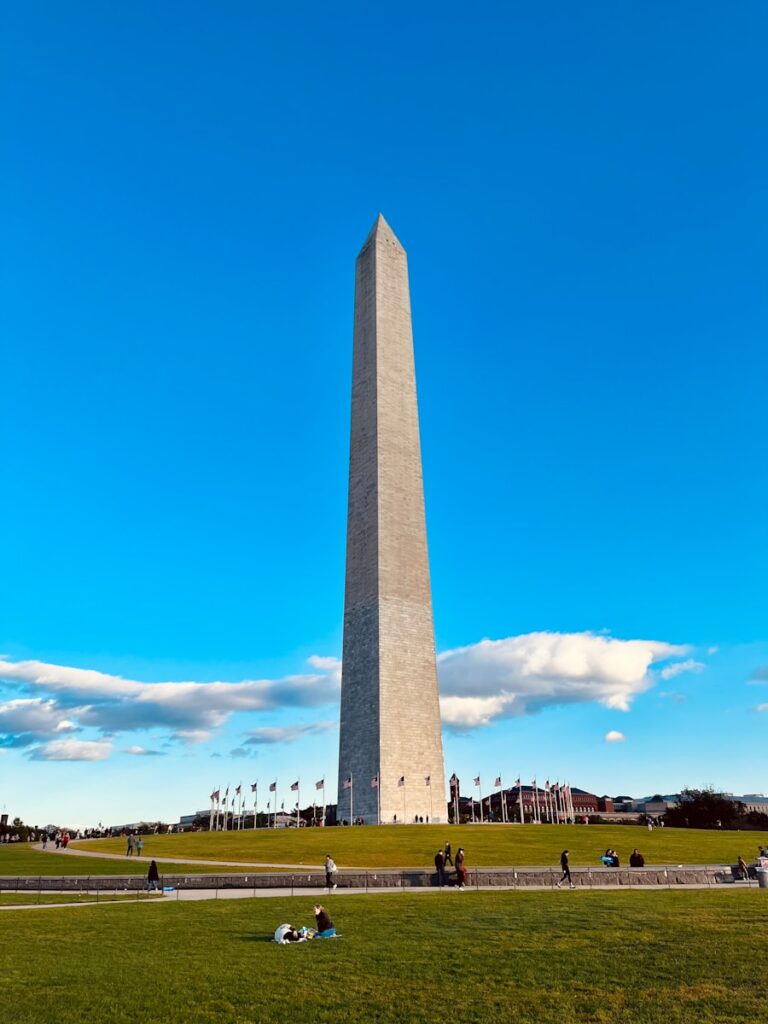
5. **Washington: Echoing Environmental Priorities in the Northwest** Adjacent to Oregon, the state of Washington also adheres to CARB’s emissions regulations, thus preventing the sale of the powerful Dodge Durango R/T 392 and SRT Hellcat models. This decision aligns Washington with the environmental goals of its southern neighbor and other CARB-compliant states, further solidifying the regional impact on Dodge’s distribution strategy for these high-performance SUVs.
For car enthusiasts in Washington, this means facing the same restrictions as those in California and Oregon. The aspiration to own a Durango Hellcat, a vehicle synonymous with raw power and an unbridled driving experience, will be tempered by the reality of state-specific emissions laws. This collective enforcement by multiple states creates a significant barrier to Dodge’s ability to offer its full V8 range across the entire U.S. market.
The regulatory environment in Washington, much like other CARB states, forces Dodge to make strategic choices about where to allocate its resources for compliance. The current approach of restricting sales rather than undertaking costly modifications suggests a pragmatic, albeit frustrating, decision for both the automaker and the affected consumers.
Car Model Information: 2020 Dodge Durango SXT RWD
Name: Dodge Durango
Manufacturer: Dodge
Production: 1997–present
Class: Mid-size,SUV
Predecessor: Dodge Ramcharger,Dodge Town Panel and Town Wagon
Related: Dodge Dakota
Layout: Front-engine, rear-wheel-drive layout,automobile layout
Caption: Dodge Durango GT 2021
ModelYears: 1998–2009,2011–present
Categories: 2000s cars, 2010s cars, 2020s cars, All-wheel-drive vehicles, All accuracy disputes
Summary: The Dodge Durango is a mid-size SUV produced by Dodge starting with the 1998 model year. The first two generations were very similar in that both were based on the Dodge Dakota and Dodge Ram, both featured a body-on-frame construction and both were produced at the Newark Assembly Plant in Newark, Delaware through the 2009 model year.
The third-generation Durango began with the 2011 model year. It is built on the same platform as the Jeep Grand Cherokee, features unibody construction, and has been assembled at the Jefferson North Assembly Plant in Detroit, Michigan, since late 2010.
Each generation had options for different engine sizes and power ratings, with different transmissions also. In 2009 a hybrid variant was introduced, but ended quickly with the second generation Durango. From 2007 to 2009 the Durango was available as the Chrysler Aspen from Chrysler. Over two million Durangos have been sold since it was introduced in 1998.
Get more information about: Dodge Durango
Buying a high-performing used car >>>
Brand: Dodge Model: Durango
Price: $20,993 Mileage: 60,817 mi.
6. **New Jersey: A Mid-Atlantic State Joining the CARB Ranks** Crossing back to the East Coast, New Jersey is another state that has adopted CARB’s emissions standards, consequently banning the sale of the Dodge Durango R/T 392 and SRT Hellcat. This inclusion underscores the extensive geographical reach of these regulations, impacting diverse markets from the Pacific to the Atlantic. For performance car aficionados in New Jersey, this means missing out on Dodge’s most potent Durango offerings.
New Jersey’s alignment with CARB highlights a growing trend among states to adopt more stringent environmental policies, even in regions not typically associated with California’s unique regulatory landscape. This expansion of CARB influence complicates the national automotive market, creating distinct zones for vehicle availability and posing ongoing challenges for manufacturers.
Dodge’s spokesperson confirmed the situation, stating that while the 5.7-liter Hemi GT is available everywhere, the 6.4-liter R/T and 6.2-liter supercharged Hellcat are restricted to non-CARB states. This clarification is a bitter pill for prospective buyers in New Jersey who might have been eyeing these performance behemoths.
Car Model Information: 2020 Dodge Durango SXT RWD
Name: Dodge Durango
Manufacturer: Dodge
Production: 1997–present
Class: Mid-size,SUV
Predecessor: Dodge Ramcharger,Dodge Town Panel and Town Wagon
Related: Dodge Dakota
Layout: Front-engine, rear-wheel-drive layout,automobile layout
Caption: Dodge Durango GT 2021
ModelYears: 1998–2009,2011–present
Categories: 2000s cars, 2010s cars, 2020s cars, All-wheel-drive vehicles, All accuracy disputes
Summary: The Dodge Durango is a mid-size SUV produced by Dodge starting with the 1998 model year. The first two generations were very similar in that both were based on the Dodge Dakota and Dodge Ram, both featured a body-on-frame construction and both were produced at the Newark Assembly Plant in Newark, Delaware through the 2009 model year.
The third-generation Durango began with the 2011 model year. It is built on the same platform as the Jeep Grand Cherokee, features unibody construction, and has been assembled at the Jefferson North Assembly Plant in Detroit, Michigan, since late 2010.
Each generation had options for different engine sizes and power ratings, with different transmissions also. In 2009 a hybrid variant was introduced, but ended quickly with the second generation Durango. From 2007 to 2009 the Durango was available as the Chrysler Aspen from Chrysler. Over two million Durangos have been sold since it was introduced in 1998.
Get more information about: Dodge Durango
Buying a high-performing used car >>>
Brand: Dodge Model: Durango
Price: $20,993 Mileage: 60,817 mi.
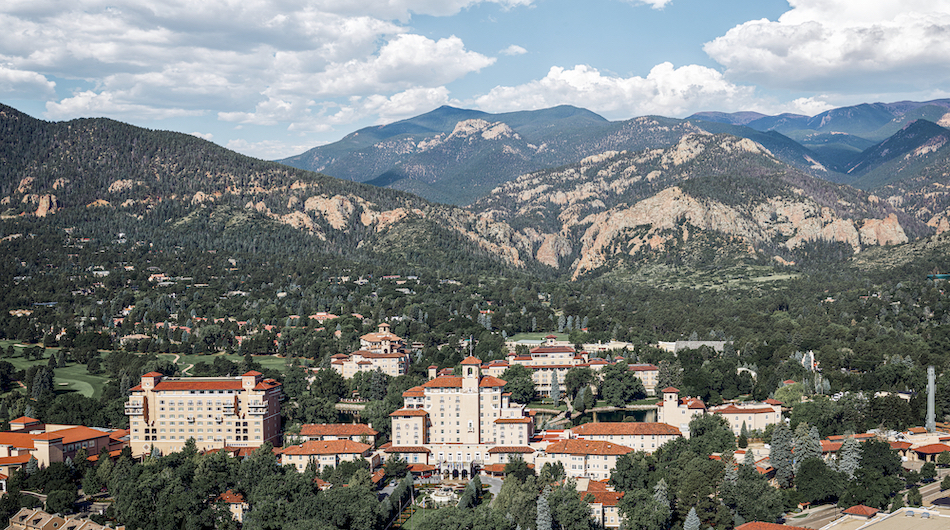
7. **Colorado: The Mountain State’s Emissions Stand** Even in the Rocky Mountain region, Colorado has joined the ranks of CARB-compliant states, which means the Dodge Durango R/T 392 and SRT Hellcat are off the menu for buyers there. This shows that the influence of California’s Air Resources Board extends far beyond the coastal states, penetrating inland markets and expanding the footprint of these sales restrictions across the country.
Colorado’s decision to follow CARB standards signifies a broader commitment to environmental stewardship, even in states not traditionally at the forefront of automotive emissions regulation. For Dodge and its enthusiasts, this means a significant market for performance vehicles is curtailed, further fragmenting the national sales strategy for the 2026 Durango V8 lineup.
The situation in Colorado underscores the complexity facing automakers like Stellantis. While the company has re-embraced V8s following shifts in federal policy, the persistent power of state-level regulations, particularly CARB’s, creates an intricate web of market access. Enthusiasts in Colorado, like those in other affected states, will keenly feel the absence of these iconic Hemi-powered Durangos.
Car Model Information: 2020 Dodge Durango SXT RWD
Name: Dodge Durango
Manufacturer: Dodge
Production: 1997–present
Class: Mid-size,SUV
Predecessor: Dodge Ramcharger,Dodge Town Panel and Town Wagon
Related: Dodge Dakota
Layout: Front-engine, rear-wheel-drive layout,automobile layout
Caption: Dodge Durango GT 2021
ModelYears: 1998–2009,2011–present
Categories: 2000s cars, 2010s cars, 2020s cars, All-wheel-drive vehicles, All accuracy disputes
Summary: The Dodge Durango is a mid-size SUV produced by Dodge starting with the 1998 model year. The first two generations were very similar in that both were based on the Dodge Dakota and Dodge Ram, both featured a body-on-frame construction and both were produced at the Newark Assembly Plant in Newark, Delaware through the 2009 model year.
The third-generation Durango began with the 2011 model year. It is built on the same platform as the Jeep Grand Cherokee, features unibody construction, and has been assembled at the Jefferson North Assembly Plant in Detroit, Michigan, since late 2010.
Each generation had options for different engine sizes and power ratings, with different transmissions also. In 2009 a hybrid variant was introduced, but ended quickly with the second generation Durango. From 2007 to 2009 the Durango was available as the Chrysler Aspen from Chrysler. Over two million Durangos have been sold since it was introduced in 1998.
Get more information about: Dodge Durango
Buying a high-performing used car >>>
Brand: Dodge Model: Durango
Price: $20,993 Mileage: 60,817 mi.
Read more about: America’s Automotive Heartbeat: Discovering 15 Classic Cars That Reign Supreme, State by State
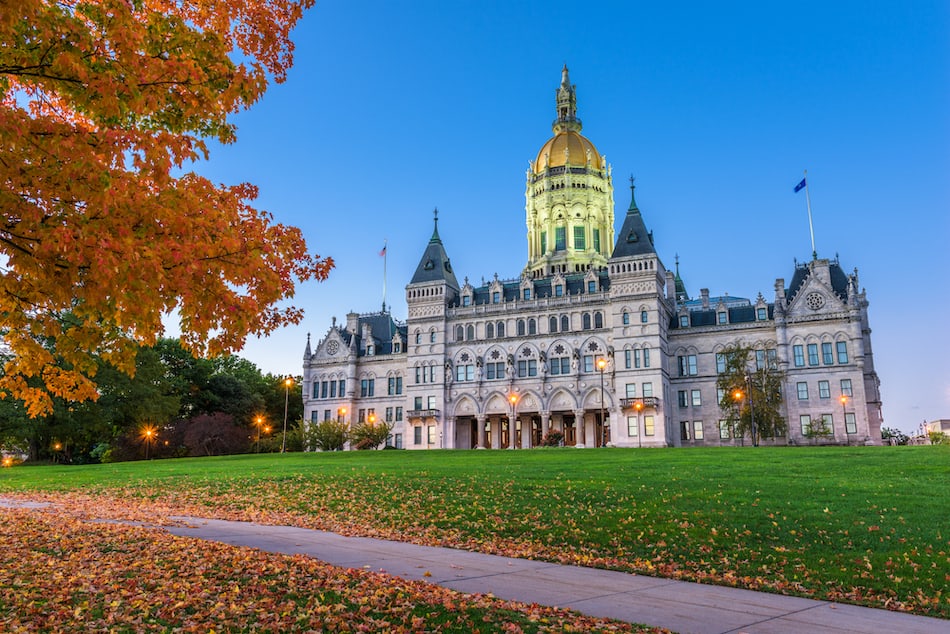
8. **Connecticut: New England’s Stance on Emissions Enforcement**Moving further up the Eastern Seaboard, Connecticut stands as another key state where Dodge’s ambitious V8-only strategy for the Durango faces significant hurdles. Aligning with the rigorous standards set by the California Air Resources Board (CARB), the Constitution State’s regulatory framework precludes the sale of the high-performance 2026 Durango R/T 392 and the formidable SRT Hellcat within its borders. This means that for enthusiasts in Connecticut, the full-throated roar of these iconic Hemi engines will remain an aspiration rather than a reality on local roads.
The inclusion of Connecticut in this group of CARB-compliant states underscores the comprehensive geographical reach of these environmental mandates. It’s not merely a coastal phenomenon but a widespread adoption of stricter emissions rules by states committed to improving air quality. For Dodge, this translates into a fragmented national market, where their most potent Durango offerings are available to only a segment of their target audience, despite widespread demand.
This reality poses a complex challenge for Stellantis, as the decision to re-embrace V8s across its lineup, including the Durango, was predicated on a perceived shift in the regulatory climate. However, the enduring power of state-level bodies like CARB means that even with federal fuel-economy penalties nullified, the path to nationwide sales for every powertrain variant is far from clear. Automakers must carefully weigh the cost of compliance against potential market share in these critical states.
Ultimately, the ban in Connecticut, much like in its New England neighbors, emphasizes the ongoing tension between performance aspirations and environmental imperatives. For local gearheads, the absence of the 392 and Hellcat models necessitates a pivot to other vehicles or, perhaps, a drive to a non-CARB state for purchase and subsequent registration, though the latter often comes with its own set of legal complexities.
Car Model Information: 2020 Dodge Durango SXT RWD
Name: Dodge Durango
Manufacturer: Dodge
Production: 1997–present
Class: Mid-size,SUV
Predecessor: Dodge Ramcharger,Dodge Town Panel and Town Wagon
Related: Dodge Dakota
Layout: Front-engine, rear-wheel-drive layout,automobile layout
Caption: Dodge Durango GT 2021
ModelYears: 1998–2009,2011–present
Categories: 2000s cars, 2010s cars, 2020s cars, All-wheel-drive vehicles, All accuracy disputes
Summary: The Dodge Durango is a mid-size SUV produced by Dodge starting with the 1998 model year. The first two generations were very similar in that both were based on the Dodge Dakota and Dodge Ram, both featured a body-on-frame construction and both were produced at the Newark Assembly Plant in Newark, Delaware through the 2009 model year.
The third-generation Durango began with the 2011 model year. It is built on the same platform as the Jeep Grand Cherokee, features unibody construction, and has been assembled at the Jefferson North Assembly Plant in Detroit, Michigan, since late 2010.
Each generation had options for different engine sizes and power ratings, with different transmissions also. In 2009 a hybrid variant was introduced, but ended quickly with the second generation Durango. From 2007 to 2009 the Durango was available as the Chrysler Aspen from Chrysler. Over two million Durangos have been sold since it was introduced in 1998.
Get more information about: Dodge Durango
Buying a high-performing used car >>>
Brand: Dodge Model: Durango
Price: $20,993 Mileage: 60,817 mi.
9. **Delaware: A Small State with Significant Regulatory Impact**In the Mid-Atlantic region, Delaware, despite its smaller geographical footprint, wields a notable influence on the automotive landscape by adhering to CARB emission standards. This commitment means that the potent 6.4-liter R/T 392 and the supercharged 6.2-liter Hellcat iterations of the 2026 Dodge Durango are effectively banned from sale within its confines. For residents of the First State who were eagerly anticipating the return of these V8 powerhouses, this regulatory alignment delivers a restrictive blow.
Delaware’s participation in the CARB coalition reinforces the idea that these environmental regulations are not exclusive to large population centers but are adopted by diverse states based on their policy priorities. It further complicates Dodge’s distribution strategy, creating an intricate mosaic of availability across the country for vehicles specifically designed to cater to performance enthusiasts. The collective impact of these states creates a formidable barrier to a truly uniform national launch.
From an industry perspective, the situation in states like Delaware highlights the financial tightrope automakers walk. The investment required for additional certifications and mechanical modifications to bring high-output V8 engines into CARB compliance can be substantial. For a niche product like the Hellcat Durango, Stellantis has evidently made a strategic calculation that, for now, restricting sales is a more economically viable path than a costly re-engineering effort for every market.
The inability to purchase these specific Durango trims in Delaware reflects a broader trend where environmental policy directly shapes consumer choice. While the nationwide availability of the 5.7-liter Hemi GT provides an alternative, it certainly doesn’t satisfy the cravings of those who desire the pinnacle of Dodge’s V8 performance in an SUV package.
Car Model Information: 2020 Dodge Durango SXT RWD
Name: Dodge Durango
Manufacturer: Dodge
Production: 1997–present
Class: Mid-size,SUV
Predecessor: Dodge Ramcharger,Dodge Town Panel and Town Wagon
Related: Dodge Dakota
Layout: Front-engine, rear-wheel-drive layout,automobile layout
Caption: Dodge Durango GT 2021
ModelYears: 1998–2009,2011–present
Categories: 2000s cars, 2010s cars, 2020s cars, All-wheel-drive vehicles, All accuracy disputes
Summary: The Dodge Durango is a mid-size SUV produced by Dodge starting with the 1998 model year. The first two generations were very similar in that both were based on the Dodge Dakota and Dodge Ram, both featured a body-on-frame construction and both were produced at the Newark Assembly Plant in Newark, Delaware through the 2009 model year.
The third-generation Durango began with the 2011 model year. It is built on the same platform as the Jeep Grand Cherokee, features unibody construction, and has been assembled at the Jefferson North Assembly Plant in Detroit, Michigan, since late 2010.
Each generation had options for different engine sizes and power ratings, with different transmissions also. In 2009 a hybrid variant was introduced, but ended quickly with the second generation Durango. From 2007 to 2009 the Durango was available as the Chrysler Aspen from Chrysler. Over two million Durangos have been sold since it was introduced in 1998.
Get more information about: Dodge Durango
Buying a high-performing used car >>>
Brand: Dodge Model: Durango
Price: $20,993 Mileage: 60,817 mi.
Read more about: I’ve Been to All 50 States: These 14 Are the Underrated Gems You Absolutely Need to Explore Now

10. **Maine: Northern New England Joins the CARB Alliance**Further north in New England, Maine, renowned for its rugged coastline and commitment to natural preservation, also adheres to the stringent emissions regulations of the California Air Resources Board. This adherence places the Pine Tree State on the list of jurisdictions where the visceral power of the 2026 Dodge Durango R/T 392 and the SRT Hellcat will not be legally accessible to buyers. It’s a regulatory decision that echoes the environmental priorities seen across a significant portion of the nation.
The environmental foresight demonstrated by Maine, in joining other states in adopting CARB standards, creates a cohesive bloc of states on the East Coast where stricter rules are in effect. For Dodge, this translates into a consistent regional challenge, as the company must navigate a contiguous area where its most celebrated V8 powertrains for the Durango are unavailable. This impacts dealer inventories and marketing efforts significantly.
Considering the strong automotive culture and appreciation for robust vehicles that often characterize New England, the ban on these specific Durango models in Maine is particularly noteworthy. It illustrates that even in markets that might traditionally embrace powerful, all-terrain-capable SUVs, environmental regulations are taking precedence, shaping what vehicles manufacturers can ultimately offer to the public.
While Dodge continues to work with CARB on potential opportunities to sell these two powertrains in all states, the current reality for Maine residents is that their options for a new, high-performance Durango are limited. The 5.7-liter Hemi GT remains available, but the raw, unadulterated power of the 392 and Hellcat versions is, for now, beyond reach within the state’s borders.
Car Model Information: 2020 Dodge Durango SXT RWD
Name: Dodge Durango
Manufacturer: Dodge
Production: 1997–present
Class: Mid-size,SUV
Predecessor: Dodge Ramcharger,Dodge Town Panel and Town Wagon
Related: Dodge Dakota
Layout: Front-engine, rear-wheel-drive layout,automobile layout
Caption: Dodge Durango GT 2021
ModelYears: 1998–2009,2011–present
Categories: 2000s cars, 2010s cars, 2020s cars, All-wheel-drive vehicles, All accuracy disputes
Summary: The Dodge Durango is a mid-size SUV produced by Dodge starting with the 1998 model year. The first two generations were very similar in that both were based on the Dodge Dakota and Dodge Ram, both featured a body-on-frame construction and both were produced at the Newark Assembly Plant in Newark, Delaware through the 2009 model year.
The third-generation Durango began with the 2011 model year. It is built on the same platform as the Jeep Grand Cherokee, features unibody construction, and has been assembled at the Jefferson North Assembly Plant in Detroit, Michigan, since late 2010.
Each generation had options for different engine sizes and power ratings, with different transmissions also. In 2009 a hybrid variant was introduced, but ended quickly with the second generation Durango. From 2007 to 2009 the Durango was available as the Chrysler Aspen from Chrysler. Over two million Durangos have been sold since it was introduced in 1998.
Get more information about: Dodge Durango
Buying a high-performing used car >>>
Brand: Dodge Model: Durango
Price: $20,993 Mileage: 60,817 mi.
11. **Maryland: The Old Line State’s Emissions Commitment**Down the Mid-Atlantic seaboard, Maryland stands firm in its commitment to cleaner air by adopting the California Air Resources Board’s emissions standards. This legislative alignment means that the impressive 2026 Dodge Durango R/T 392 and the supercharged SRT Hellcat models will not be eligible for sale or registration within the Old Line State. For Maryland’s passionate automotive community, this decision effectively curtails access to two of Dodge’s most exciting performance SUV offerings.
Maryland’s role as a CARB-compliant state further extends the geographical impact of these regulations, bridging the gap between New England and other Southern-leaning states that also follow California’s lead. This interconnected web of states adhering to a unified environmental standard presents a consistent and expansive challenge for automakers, requiring them to adapt their product offerings on a broad, multi-state basis.
The complexities of national distribution for performance vehicles become strikingly apparent in situations like Maryland’s. While Dodge has made a bold statement by going all-in on V8 power for the Durango, the practicalities of a fragmented regulatory landscape mean that a “one-size-fits-all” approach to sales is simply not feasible. The financial implications of modifying these engines for compliance, as Stellantis has indicated, currently outweigh the perceived market benefits for these specific powertrains in CARB states.
Enthusiasts in Maryland, much like those in neighboring CARB states, are left with a clear choice: either opt for the readily available Durango GT with the 5.7-liter Hemi or explore purchasing options outside of their home state, a decision that often involves navigating complex registration and emissions testing requirements.
Car Model Information: 2012 Dodge Durango Crew
Name: Dodge Durango
Manufacturer: Dodge
Production: 1997–present
Class: Mid-size,SUV
Predecessor: Dodge Ramcharger,Dodge Town Panel and Town Wagon
Related: Dodge Dakota
Layout: Front-engine, rear-wheel-drive layout,automobile layout
Caption: Dodge Durango GT 2021
ModelYears: 1998–2009,2011–present
Categories: 2000s cars, 2010s cars, 2020s cars, All-wheel-drive vehicles, All accuracy disputes
Summary: The Dodge Durango is a mid-size SUV produced by Dodge starting with the 1998 model year. The first two generations were very similar in that both were based on the Dodge Dakota and Dodge Ram, both featured a body-on-frame construction and both were produced at the Newark Assembly Plant in Newark, Delaware through the 2009 model year.
The third-generation Durango began with the 2011 model year. It is built on the same platform as the Jeep Grand Cherokee, features unibody construction, and has been assembled at the Jefferson North Assembly Plant in Detroit, Michigan, since late 2010.
Each generation had options for different engine sizes and power ratings, with different transmissions also. In 2009 a hybrid variant was introduced, but ended quickly with the second generation Durango. From 2007 to 2009 the Durango was available as the Chrysler Aspen from Chrysler. Over two million Durangos have been sold since it was introduced in 1998.
Get more information about: Dodge Durango
Buying a high-performing used car >>>
Brand: Dodge Model: Durango
Price: $7,995 Mileage: 161,016 mi.
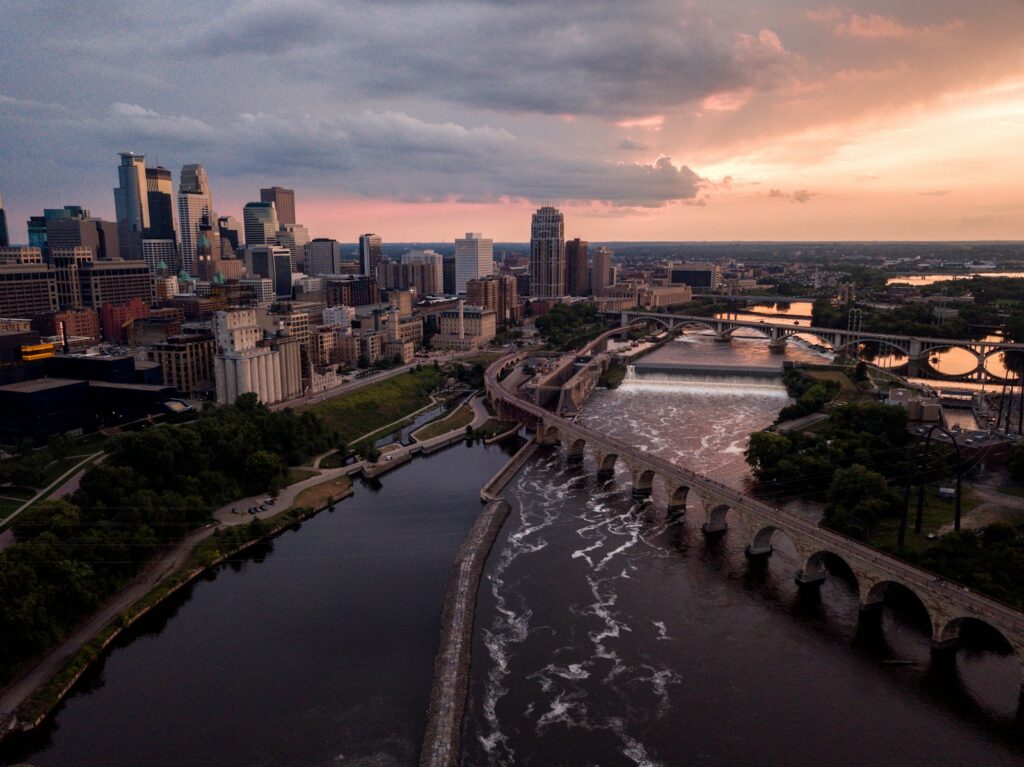
12. **Minnesota: CARB’s Reach Extends to the Midwest**In a somewhat unexpected turn for some, Minnesota also features prominently on the list of states that have adopted California Air Resources Board emissions standards, thereby preventing the sale of the high-output 2026 Dodge Durango R/T 392 and SRT Hellcat within its borders. The Gopher State’s commitment to these stricter environmental regulations demonstrates that the influence of CARB transcends traditional coastal regions, making its impact felt deeply in the American Midwest.
Minnesota’s decision to follow CARB standards signifies a growing national movement towards enhanced environmental protection, challenging preconceived notions about which states prioritize stringent emissions controls. For Dodge, this means the regulatory landscape impacting its V8 Durango lineup is even broader and more geographically diverse than some might initially assume, complicating supply chain and dealer allocation strategies.
The unavailability of these powerful models in a state like Minnesota represents a significant segment of the market that Dodge cannot fully tap into for its top-tier Durango offerings. This forces prospective buyers in the state to consider alternatives or perhaps look at purchasing vehicles from non-CARB compliant states, which, as noted, comes with its own logistical and legal considerations. It’s a vivid illustration of how state-level environmental policy can directly influence consumer access to specific vehicle trims.
As Stellantis continues its strategic shift back towards V8s, the challenges posed by states like Minnesota highlight the intricate balancing act between delivering performance that enthusiasts crave and adhering to a complex, evolving regulatory framework. The company’s ongoing dialogue with CARB reflects an effort to overcome these obstacles, but for now, the ban remains in effect.
Car Model Information: 2020 Dodge Durango SXT RWD
Name: Dodge Durango
Manufacturer: Dodge
Production: 1997–present
Class: Mid-size,SUV
Predecessor: Dodge Ramcharger,Dodge Town Panel and Town Wagon
Related: Dodge Dakota
Layout: Front-engine, rear-wheel-drive layout,automobile layout
Caption: Dodge Durango GT 2021
ModelYears: 1998–2009,2011–present
Categories: 2000s cars, 2010s cars, 2020s cars, All-wheel-drive vehicles, All accuracy disputes
Summary: The Dodge Durango is a mid-size SUV produced by Dodge starting with the 1998 model year. The first two generations were very similar in that both were based on the Dodge Dakota and Dodge Ram, both featured a body-on-frame construction and both were produced at the Newark Assembly Plant in Newark, Delaware through the 2009 model year.
The third-generation Durango began with the 2011 model year. It is built on the same platform as the Jeep Grand Cherokee, features unibody construction, and has been assembled at the Jefferson North Assembly Plant in Detroit, Michigan, since late 2010.
Each generation had options for different engine sizes and power ratings, with different transmissions also. In 2009 a hybrid variant was introduced, but ended quickly with the second generation Durango. From 2007 to 2009 the Durango was available as the Chrysler Aspen from Chrysler. Over two million Durangos have been sold since it was introduced in 1998.
Get more information about: Dodge Durango
Buying a high-performing used car >>>
Brand: Dodge Model: Durango
Price: $20,993 Mileage: 60,817 mi.

13. **Nevada: The Silver State’s Environmental Alignment**Out West, just east of California, Nevada also aligns itself with the stringent environmental mandates of the California Air Resources Board. This strategic decision places the Silver State among those where the potent 2026 Dodge Durango R/T 392 and the supercharged SRT Hellcat will not be available for purchase or registration. For performance enthusiasts across Nevada, this means the aspiration to own one of these definitive V8 SUVs is currently curtailed by state-level emissions requirements.
Nevada’s adoption of CARB standards solidifies a regional trend among Western states to prioritize stricter environmental controls, creating a cohesive regulatory zone in a critical automotive market. This regional consistency, while beneficial for environmental goals, presents a uniform challenge for manufacturers like Dodge, who must conform to these rules across multiple adjacent states. The collective weight of these markets cannot be easily overlooked.
The inability to sell the 392 and Hellcat Durangos in Nevada underscores the financial calculations Stellantis faces. Retrofitting these engines to meet CARB compliance requires significant engineering and certification efforts, an investment that, as confirmed by Dodge, “might not make financial sense” for these specific powertrains given their target demographic and market volume in regulated states.
Ultimately, the regulatory environment in Nevada, much like its neighbor California, forces Dodge to operate within a specific set of parameters for its high-performance offerings. While the company aims to cater to a broad base of V8 enthusiasts, the reality of varied state regulations dictates a more nuanced, and often restrictive, approach to nationwide product distribution.
Car Model Information: 2012 Dodge Durango Crew
Name: Dodge Durango
Manufacturer: Dodge
Production: 1997–present
Class: Mid-size,SUV
Predecessor: Dodge Ramcharger,Dodge Town Panel and Town Wagon
Related: Dodge Dakota
Layout: Front-engine, rear-wheel-drive layout,automobile layout
Caption: Dodge Durango GT 2021
ModelYears: 1998–2009,2011–present
Categories: 2000s cars, 2010s cars, 2020s cars, All-wheel-drive vehicles, All accuracy disputes
Summary: The Dodge Durango is a mid-size SUV produced by Dodge starting with the 1998 model year. The first two generations were very similar in that both were based on the Dodge Dakota and Dodge Ram, both featured a body-on-frame construction and both were produced at the Newark Assembly Plant in Newark, Delaware through the 2009 model year.
The third-generation Durango began with the 2011 model year. It is built on the same platform as the Jeep Grand Cherokee, features unibody construction, and has been assembled at the Jefferson North Assembly Plant in Detroit, Michigan, since late 2010.
Each generation had options for different engine sizes and power ratings, with different transmissions also. In 2009 a hybrid variant was introduced, but ended quickly with the second generation Durango. From 2007 to 2009 the Durango was available as the Chrysler Aspen from Chrysler. Over two million Durangos have been sold since it was introduced in 1998.
Get more information about: Dodge Durango
Buying a high-performing used car >>>
Brand: Dodge Model: Durango
Price: $7,995 Mileage: 161,016 mi.
14. **Pennsylvania: A Major Market Under CARB Restrictions**Shifting back to the East Coast, Pennsylvania, a large and significant automotive market, has also adopted the emissions standards set by the California Air Resources Board. This means that for residents of the Keystone State, the powerful 2026 Dodge Durango R/T 392 and the supercharged SRT Hellcat are effectively banned from sale. This prohibition impacts a substantial number of potential buyers and represents a considerable loss in sales volume for Dodge’s top-tier Durango trims.
Pennsylvania’s inclusion in the list of CARB-compliant states dramatically expands the geographical and demographic reach of these regulations. It highlights that major population centers outside of California are actively choosing to implement stricter environmental policies, creating a widespread network of restrictions that automakers must contend with. This challenges the notion that such bans are limited to specific, smaller markets.
The situation in Pennsylvania vividly illustrates the implications of a fragmented national market for manufacturers. While Dodge has committed to an “all-V8” Durango lineup for 2026, the inability to offer its most powerful iterations in a state as significant as Pennsylvania necessitates a reassessment of market strategies and potential revenue. This underscores the financial considerations involved in bringing non-compliant engines to market in such critical areas.
For enthusiasts throughout Pennsylvania who have long appreciated the raw power and heritage of Dodge’s Hemi engines, the ban on the 392 and Hellcat Durangos is undoubtedly disappointing. It serves as a stark reminder of how environmental policy, despite its broad benefits, can directly shape the availability of highly desired performance vehicles for individual consumers.
Car Model Information: 2020 Dodge Durango SXT RWD
Name: Dodge Durango
Manufacturer: Dodge
Production: 1997–present
Class: Mid-size,SUV
Predecessor: Dodge Ramcharger,Dodge Town Panel and Town Wagon
Related: Dodge Dakota
Layout: Front-engine, rear-wheel-drive layout,automobile layout
Caption: Dodge Durango GT 2021
ModelYears: 1998–2009,2011–present
Categories: 2000s cars, 2010s cars, 2020s cars, All-wheel-drive vehicles, All accuracy disputes
Summary: The Dodge Durango is a mid-size SUV produced by Dodge starting with the 1998 model year. The first two generations were very similar in that both were based on the Dodge Dakota and Dodge Ram, both featured a body-on-frame construction and both were produced at the Newark Assembly Plant in Newark, Delaware through the 2009 model year.
The third-generation Durango began with the 2011 model year. It is built on the same platform as the Jeep Grand Cherokee, features unibody construction, and has been assembled at the Jefferson North Assembly Plant in Detroit, Michigan, since late 2010.
Each generation had options for different engine sizes and power ratings, with different transmissions also. In 2009 a hybrid variant was introduced, but ended quickly with the second generation Durango. From 2007 to 2009 the Durango was available as the Chrysler Aspen from Chrysler. Over two million Durangos have been sold since it was introduced in 1998.
Get more information about: Dodge Durango
Buying a high-performing used car >>>
Brand: Dodge Model: Durango
Price: $20,993 Mileage: 60,817 mi.
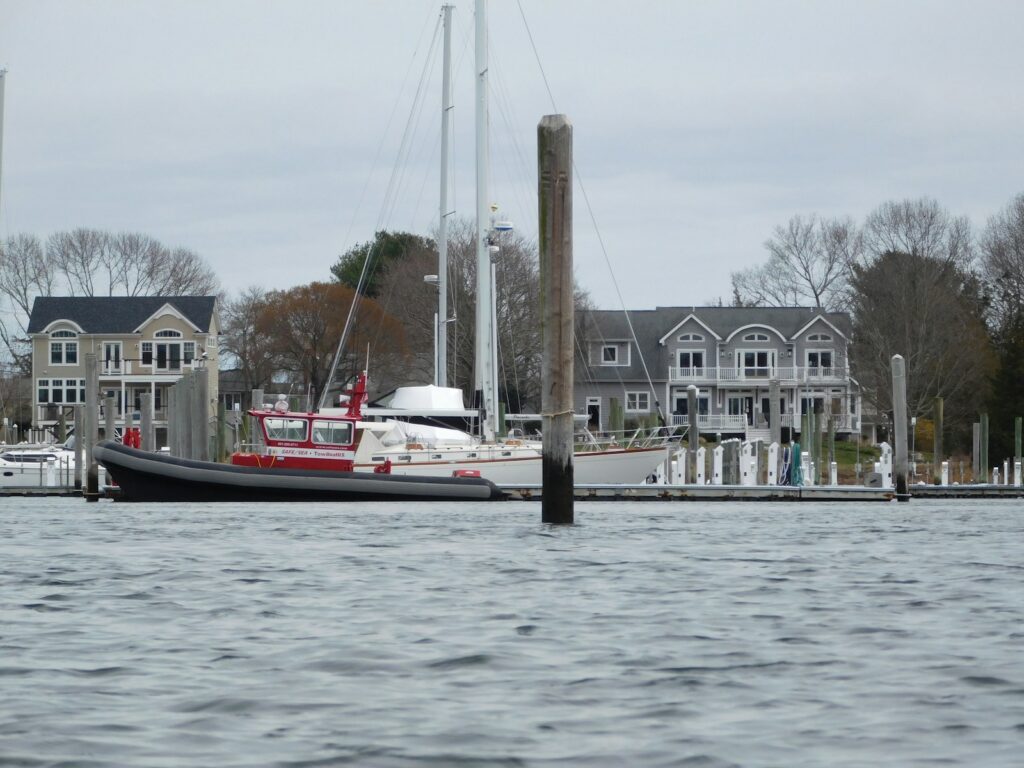
15. **Rhode Island: The Smallest State, A Consistent Standard**Completing our survey of states adhering to CARB regulations on the East Coast, Rhode Island, the nation’s smallest state, nevertheless stands firm in its commitment to stricter emissions standards. This means that, despite its size, the Ocean State will not permit the sale of the high-performance 2026 Dodge Durango R/T 392 and the formidable SRT Hellcat models. This decision, though impacting a smaller market by volume, reinforces the widespread and consistent adoption of CARB rules.
Rhode Island’s alignment with CARB, alongside its New England neighbors, emphasizes the regional solidarity in environmental policy. It showcases how a collective approach to emissions reduction across diverse states, regardless of individual market size, can create a unified regulatory front that significantly influences national automotive distribution patterns. The bans are not isolated incidents but part of a larger, coordinated effort.
From Dodge’s perspective, while the sales volume in a state like Rhode Island might be comparatively lower, the principle of compliance and the overarching challenge of a fragmented national market remain significant. Each additional CARB state adds to the complexity of product planning, logistics, and marketing, demanding a strategic response from Stellantis as it navigates its re-embraced V8 strategy.
The situation in Rhode Island, like that in many other CARB states, solidifies the current reality for prospective buyers: unless Dodge’s ongoing discussions with CARB yield a breakthrough, the most potent Durango V8s will simply not be an option for purchase within its borders. This pushes enthusiasts towards the 5.7-liter Hemi GT or towards the potentially complex alternative of purchasing in a non-CARB state.
**Broader Implications, Strategic Shifts, and the Road Ahead**
The extensive list of states where the Dodge Durango R/T 392 and SRT Hellcat models are banned due to CARB compliance issues paints a comprehensive picture of the challenges facing Stellantis’s renewed commitment to V8 powertrains. This isn’t merely a localized issue; it’s a profound demonstration of how environmental regulations, even in the absence of stringent federal fuel-economy penalties, continue to dictate market access for high-performance vehicles across nearly 40 percent of the U.S. market. The company’s strategic shift towards re-embracing V8s, following a period under former CEO Carlos Tavares where V8s were being phased out in favor of smaller six-cylinder and electrified options, now confronts a deeply entrenched regulatory landscape that demands careful navigation.
Financially, the decision to restrict the sale of these powerful Durango models in CARB states reflects a pragmatic, albeit frustrating, calculation by Stellantis. Bringing the 6.4-liter V8 and supercharged 6.2-liter Hellcat engines into full CARB compliance would necessitate “extra certifications and mechanical modifications that might not make financial sense,” as confirmed by Dodge. This implies a significant investment in engineering, testing, and regulatory processes that, for a single model line like the aging Durango, might not yield a proportional return in the limited CARB markets. It’s a testament to the high cost of emissions compliance, a hurdle that often forces automakers to make difficult choices about product availability.
Looking ahead, potential future scenarios for these banned models could hinge on several factors, including ongoing legal battles. The U.S. Justice Department’s pending litigation against the California Air Resources Board, which seeks to end the enforcement of CARB’s standards for both heavy-duty and light-duty vehicles, presents a wild card. Should the administration’s legal actions prove successful in establishing federal preemption over state authority on such emissions issues, it could potentially invalidate the current standards blocking these vehicles, thereby opening the door for automakers to sell non-CARB-compliant models in all states. This legal pathway offers a glimmer of hope for enthusiasts and for Dodge’s broader V8 strategy.
Car Model Information: 2012 Dodge Durango Crew
Name: Dodge Durango
Manufacturer: Dodge
Production: 1997–present
Class: Mid-size,SUV
Predecessor: Dodge Ramcharger,Dodge Town Panel and Town Wagon
Related: Dodge Dakota
Layout: Front-engine, rear-wheel-drive layout,automobile layout
Caption: Dodge Durango GT 2021
ModelYears: 1998–2009,2011–present
Categories: 2000s cars, 2010s cars, 2020s cars, All-wheel-drive vehicles, All accuracy disputes
Summary: The Dodge Durango is a mid-size SUV produced by Dodge starting with the 1998 model year. The first two generations were very similar in that both were based on the Dodge Dakota and Dodge Ram, both featured a body-on-frame construction and both were produced at the Newark Assembly Plant in Newark, Delaware through the 2009 model year.
The third-generation Durango began with the 2011 model year. It is built on the same platform as the Jeep Grand Cherokee, features unibody construction, and has been assembled at the Jefferson North Assembly Plant in Detroit, Michigan, since late 2010.
Each generation had options for different engine sizes and power ratings, with different transmissions also. In 2009 a hybrid variant was introduced, but ended quickly with the second generation Durango. From 2007 to 2009 the Durango was available as the Chrysler Aspen from Chrysler. Over two million Durangos have been sold since it was introduced in 1998.
Get more information about: Dodge Durango
Buying a high-performing used car >>>
Brand: Dodge Model: Durango
Price: $7,995 Mileage: 161,016 mi.
In the interim, Dodge has confirmed it is “working to change that,” and continues to “work with CARB on opportunities to sell these two powertrains in all states alongside the 5.7-liter Durango GT.” While the exact nature of these negotiations remains undisclosed, it suggests an active pursuit of solutions, whether through advocating for regulatory adjustments, exploring technical modifications, or seeking specific exemptions. For now, however, the availability of the Durango R/T 392 and SRT Hellcat remains geographically segmented, a powerful testament to the enduring influence of state-level environmental policy on the American automotive market and the spirited battle between performance aspirations and regulatory realities.

